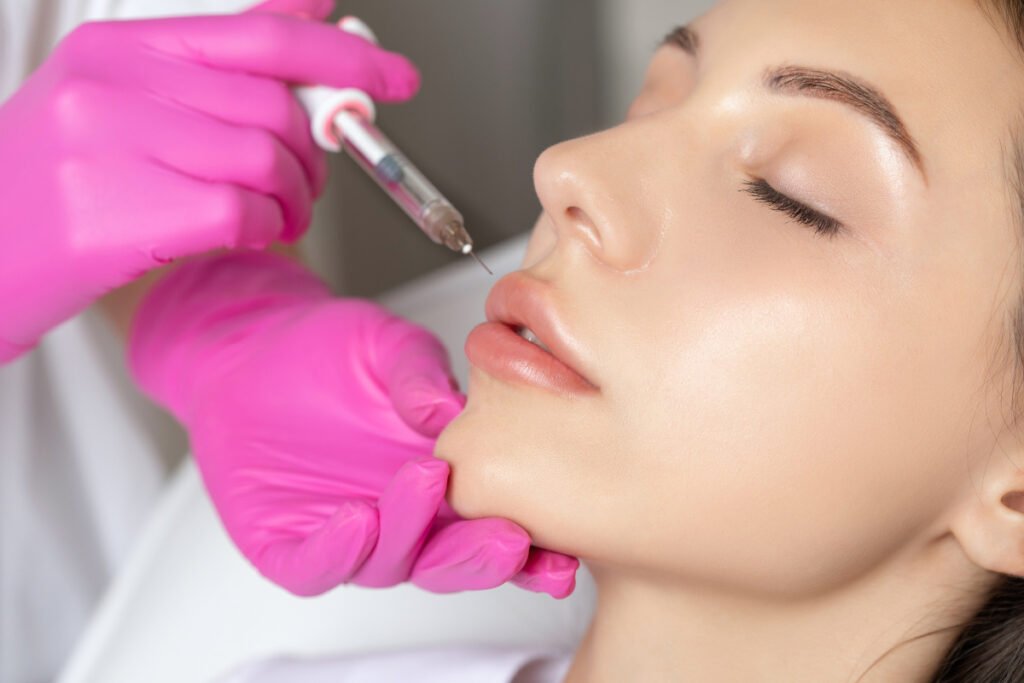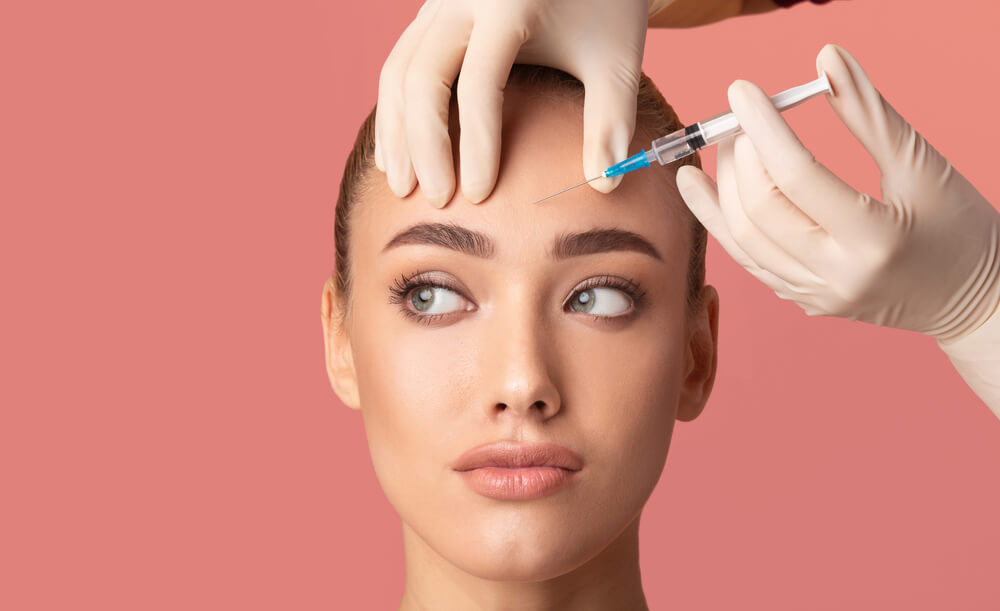Botox, a household name in cosmetic treatments, has become a go-to solution for smoothing dynamic wrinkles like those on the forehead and around the eyes (crow’s feet). Derived from botulinum toxin type A, Botox temporarily relaxes facial muscles, reducing the appearance of wrinkles caused by repetitive expressions. With costs ranging from $10 to $25 per unit in the U.S., the decision to invest in Botox involves weighing its benefits—non-invasive procedure, quick results—against its drawbacks, such as temporary effects and recurring costs. This article analyzes the value of Botox for forehead wrinkles and crow’s feet, comparing costs, results, and real-world experiences to help determine if it’s worth the investment.
Understanding Botox and Dynamic Wrinkles
Dynamic wrinkles form from repetitive facial movements, such as squinting (crow’s feet) or raising eyebrows (forehead lines). Unlike static wrinkles, which result from collagen loss and remain visible at rest, dynamic wrinkles are ideal candidates for Botox, which works by blocking nerve signals to specific muscles, preventing contractions that cause creases. The FDA has approved Botox Cosmetic for three areas: forehead lines, glabellar lines (frown lines between the eyes), and crow’s feet, with treatments typically requiring 10–40 units per area depending on muscle strength and wrinkle severity.

The procedure is minimally invasive, involving small injections administered in 10–15 minutes, with results appearing within 5–14 days and lasting 3–4 months. Its popularity is evident: in 2022, over 9 million Botox treatments were performed globally, with North America leading the market. But with costs averaging $300–$800 per session, is Botox worth it? Let’s break it down by examining its application for forehead wrinkles and crow’s feet, including costs, benefits, and limitations.
Read more: Dietary Approaches In The Management Of Diabetic Patients With Kidney Disease
Botox for Forehead Wrinkles
How It Works
Horizontal forehead lines result from the frontalis muscle’s repeated contractions during expressions like surprise or concern. Botox relaxes this muscle, smoothing the skin above. Practitioners typically inject 15–30 units across five sites on the forehead, with Allergan (Botox’s manufacturer) recommending 20 units for optimal results. The dosage varies based on factors like age, muscle strength, and desired movement, as over-injection can lead to a “frozen” look or drooping eyelids.
Costs
At $10–$25 per unit, a forehead treatment costs $150–$750 per session, averaging $300–$500. For example, in urban areas like New York City, where per-unit prices can reach $25, a 20-unit treatment costs $500. In contrast, in cities like Salt Lake City, where prices may be as low as $10 per unit, the same treatment could cost $200. Treating multiple areas, such as combining forehead and glabellar lines (requiring up to 40 units), can push costs to $400–$1,000 per session.
Results and Real-World Examples
Botox for forehead wrinkles delivers noticeable smoothing within a week, with full effects visible by two weeks. A 35-year-old marketing professional in Chicago reported spending $400 for 20 units, achieving a smoother forehead that boosted her confidence during client presentations. She noted the results lasted four months, requiring three sessions annually at $1,200 total. Another user, a 42-year-old teacher in Denver, paid $300 for 15 units to address mild forehead lines, appreciating the subtle, natural look that preserved some expression.
Pros and Cons
Pros: The treatment is quick, with no downtime, allowing patients to resume normal activities immediately. It’s effective for both existing and preventative wrinkle treatment, especially for younger patients. The results are predictable when administered by a skilled injector.
Cons: Effects are temporary, requiring repeat treatments every 3–4 months, leading to annual costs of $600–$2,250. Overuse can cause side effects like drooping eyebrows or a heavy forehead sensation. Costs can also add up if multiple areas are treated.
Read more: Home Health Care Vs. Assisted Living: Which Is Right For You?
Botox for Crow’s Feet
How It Works
Crow’s feet, the fine lines radiating from the outer corners of the eyes, form from squinting or smiling. Botox targets the orbicularis oculi muscle, requiring 6–15 units per side (12–30 units total). The lower unit requirement compared to the forehead makes crow’s feet a more affordable treatment area, but precision is critical to avoid affecting nearby muscles that control eyelid movement.
Costs
At $10–$25 per unit, crow’s feet treatment costs $120–$750 per session, averaging $200–$400. For example, a 12-unit treatment (6 units per side) at $15 per unit costs $180. In high-cost areas like Menlo Park, CA, where prices reach $20 per unit, a 20-unit treatment costs $400. Clinics may offer package deals for treating crow’s feet alongside other areas, potentially reducing per-unit costs.

Results and Real-World Examples
Crow’s feet treatments yield a refreshed, youthful appearance, often subtly lifting the brow. A 29-year-old graphic designer in Atlanta paid $250 for 15 units, noting smoother eye areas that enhanced her on-camera presence during virtual meetings. Her results lasted three months, requiring four sessions annually at $1,000. A 50-year-old nurse in Minneapolis, treating deeper crow’s feet with 24 units at $12 per unit ($288), valued the rejuvenated look but found the recurring cost a budgeting challenge.
Pros and Cons
Pros: Crow’s feet treatments require fewer units, making them more affordable than forehead treatments. The procedure enhances facial expressions by reducing lines without altering natural smiles. It’s particularly effective for early intervention in younger patients.
Cons: Like forehead treatments, results last 3–4 months, with annual costs of $480–$3,000 for maintenance. Precision is crucial, and inexperienced injectors may cause asymmetry or eyelid drooping. Some patients prefer more movement around the eyes, requiring fewer units but less dramatic results.
Comparing Value: Forehead vs. Crow’s Feet
Cost Comparison
Forehead treatments generally require more units (15–30) than crow’s feet (12–30), making them pricier per session ($300–$800 vs. $120–$750). Treating both areas simultaneously, a common choice for comprehensive rejuvenation, can require 30–60 units, costing $300–$1,500 per session. Annual costs for three to four sessions range from $900–$6,000, depending on units, provider expertise, and location. Clinics like Morpheus Medical Aesthetics offer package deals, reducing per-unit costs for multiple areas.
Effectiveness and Longevity
Both areas respond well to Botox, with results lasting 3–4 months. Crow’s feet treatments may require fewer units, offering a lower entry cost, but deeper wrinkles in either area demand higher doses. Regular treatments can extend longevity, as muscles weaken over time, potentially reducing the units needed. For example, a patient in their 30s using Botox preventatively may need fewer units than someone in their 50s treating established wrinkles.

Patient Satisfaction
Patient feedback highlights high satisfaction with both treatments. A 2023 survey by RealSelf reported 95% of Botox users found it “worth it” for its non-invasive nature and reliable results. Forehead treatments are favored for creating a polished look, while crow’s feet treatments are praised for brightening the eye area. However, dissatisfaction often stems from cost, with some patients finding the recurring expense ($1,000–$6,000 annually) prohibitive.
Broader Pros and Cons of Botox
Pros
-
Non-Invasive: Botox requires no surgery or anesthesia, with minimal recovery time. Patients can return to work or social activities immediately.
-
Quick Results: Effects appear within days, offering a fast solution for aesthetic concerns.
-
Preventative Benefits: Younger patients use Botox to delay wrinkle formation, reducing future treatment needs.
-
Versatility: Beyond cosmetics, Botox treats medical conditions like migraines and hyperhidrosis, sometimes covered by insurance.
Cons
-
Temporary Results: Effects wear off in 3–4 months, requiring ongoing treatments and costs.
-
Recurring Costs: Annual expenses can range from $600–$6,000, depending on areas treated and frequency.
-
Risk of Side Effects: Improper injection can cause drooping, asymmetry, or headaches, emphasizing the need for skilled providers.
-
Not Universal: Botox is less effective for static wrinkles, requiring fillers or other treatments for comprehensive rejuvenation.
Is Botox Worth It?
The value of Botox depends on individual priorities, budget, and aesthetic goals. For those seeking a non-invasive, effective solution for dynamic wrinkles, Botox offers significant benefits. Its ability to smooth forehead lines and crow’s feet with minimal downtime is unmatched by most skincare treatments, and its preventative potential appeals to younger users. Real-world examples, like the Chicago professional and Atlanta designer, highlight boosted confidence and professional advantages.
However, the recurring costs can be a barrier. A patient treating both forehead and crow’s feet at $600 per session, three times a year, faces $1,800 annually—a significant investment compared to topical treatments. Budgeting strategies, such as loyalty programs (e.g., AllÄ“ by Allergan) or mid-month scheduling to align with paychecks, can help. Choosing a board-certified dermatologist or plastic surgeon, like Dr. Julia Tzu in NYC, ensures safety and optimal results, justifying higher per-unit costs ($20–$35).


.jpg)










